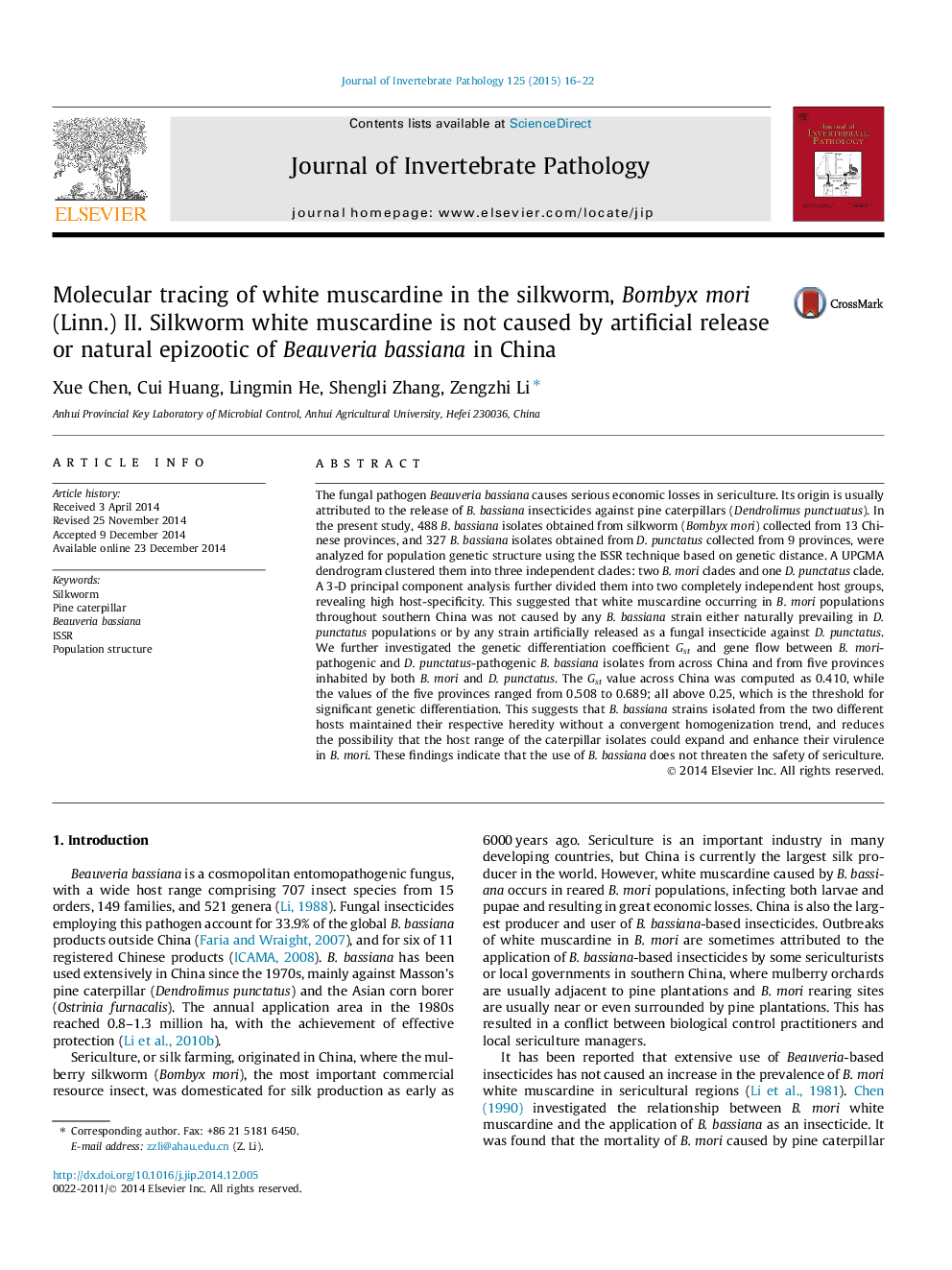| Article ID | Journal | Published Year | Pages | File Type |
|---|---|---|---|---|
| 4557673 | Journal of Invertebrate Pathology | 2015 | 7 Pages |
•White muscardine, caused by Beauveria bassiana, threatens sericulture.•B. bassiana isolates were analyzed for population genetic structure.•UPGMA dendrogram clustered them into three silkworm (2) and caterpillar (1) clades.•3-D PCA divided them into two independent groups, revealing high host-specificity.•Use of B. bassiana as a pesticide does not threaten sericulture safety.
The fungal pathogen Beauveria bassiana causes serious economic losses in sericulture. Its origin is usually attributed to the release of B. bassiana insecticides against pine caterpillars (Dendrolimus punctuatus). In the present study, 488 B. bassiana isolates obtained from silkworm (Bombyx mori) collected from 13 Chinese provinces, and 327 B. bassiana isolates obtained from D. punctatus collected from 9 provinces, were analyzed for population genetic structure using the ISSR technique based on genetic distance. A UPGMA dendrogram clustered them into three independent clades: two B. mori clades and one D. punctatus clade. A 3-D principal component analysis further divided them into two completely independent host groups, revealing high host-specificity. This suggested that white muscardine occurring in B. mori populations throughout southern China was not caused by any B. bassiana strain either naturally prevailing in D. punctatus populations or by any strain artificially released as a fungal insecticide against D. punctatus. We further investigated the genetic differentiation coefficient Gst and gene flow between B. mori-pathogenic and D. punctatus-pathogenic B. bassiana isolates from across China and from five provinces inhabited by both B. mori and D. punctatus. The Gst value across China was computed as 0.410, while the values of the five provinces ranged from 0.508 to 0.689; all above 0.25, which is the threshold for significant genetic differentiation. This suggests that B. bassiana strains isolated from the two different hosts maintained their respective heredity without a convergent homogenization trend, and reduces the possibility that the host range of the caterpillar isolates could expand and enhance their virulence in B. mori. These findings indicate that the use of B. bassiana does not threaten the safety of sericulture.
Graphical abstractFigure optionsDownload full-size imageDownload as PowerPoint slide
